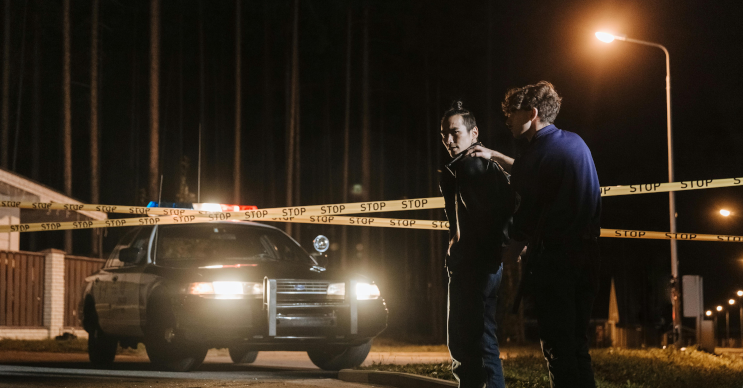Archives
June 2024
Categories
All
|
Back to Blog
Image credit: Cottonbro Studio 1320 words / 5-minute read Summary: Although subject to widely held folk beliefs, the truth about how outdoor lighting and crime interact is very unsettled scientifically. This post examines the evidence, identifies shortcomings in current research and practice, and suggests the factors and considerations that really matter. Imagine that you are in an unfamiliar city, far from home. You're walking along a street that doesn't have much lighting, passing people you can't see very well. What kind of feeling does it cause you? For many people, it isn't a good one; for women in particular, the sense of fear can be crippling. Now imagine what would ease that fear. More lighting? How bright? What if it were as bright as daylight? How much light would it take to reassure you that it was safe to walk there? These are questions people have been asking for almost as long as there has been artificial lighting. Many people, at least in Western cultures, think that an association between darkness and crime is a given. This is in part built on folk beliefs that draw direct parallels: dark = bad, light = good. It's become part of our folklore, a kind of received wisdom that few question. But what does science say about all this? Is there an evidence-based case for lighting up the night in the name of safety? And what does it tell us about how we light the world now? Evidence in disarrayThe evidence about lighting crime is very unsettled. In its Artificial Light at Night: State of the Science 2023 report, DarkSky International puts it this way: "Certain studies reported crime reduction when lighting is added to outdoor spaces. [1] Others find either a negative effect, [2] no effect, [3-4] or mixed results. [5]" There is no obvious and consistent relationship between outdoor lighting and crime that shows up in the data. Rather, whether an experiment shows a positive or negative association between them depends very much on the details. We can then ask: why is the picture so unclear? For one thing, it's difficult to get lighting and crime studies funded. When funds are available, they sometimes come from lighting equipment manufacturers. While this does not itself render the results unreliable, it demands unusual transparency from researchers to avoid any hint of bias. Some studies are not subjected to peer review, instead appearing in the so-called 'grey literature'. And some are conducted outside the parameters of what are considered best research practices, such as pre-registration of trials. This makes it very difficult to interpret results of valid experiments and compare them against each other. Are the results reproducible? And would anyone hang their hat on this evidence? In fairness to the research community, it's difficult to design and conduct valid experiments. That's because crime is a human behavior subject to a complex psychology. The result is that many variables influence crime beyond the time of day and whether light is present at night. Studies on lighting and fear of crime often can't distinguish lighting from other effects. For example, in one study that considered how the intensity of lighting influenced public perceptions of outdoor spaces at night, the authors admitted that "if a location feels unsafe in daylight then it is likely to feel unsafe after dark, regardless of the light level." [6] And how much of this is real relative to what we know about crime incidence? In a problem that "seems reasonably unique to crime," [7] there is a significant difference in terms of how prevalent people think crime is relative to its actual prevalence. [8] People predisposed to expect crime in certain areas will likely never find satisfaction in the lighting conditions in those places. The bottom line is that almost all lighting and crime results are suspect to some extent. "Studies which purport to show large lighting benefit for public safety tend to be of poor scientific and statistical quality, done by those with poor scientific and statistical background," says Dr. Paul Marchant, a statistician and researcher based in the UK who has published extensively on the subject. "[Even] better quality, large temporal- and spatial-scale studies are unable to detect any public safety lighting benefit.” "Feelings of safety" and lighting for "reassurance"Another way of looking at the problem is to focus less on testing whether lighting deters or prevents crime and more on the effect it has on the observer. What makes people feel safe in outdoor spaces at night? Feelings of insecurity are very powerful and drive people toward high light levels because they "feel safe" in the same outdoor spaces during the daytime. Make no mistake: the feeling of fear is real and, for many people, visceral. [9] And for many of the same people, they think that they won't be safe unless outdoor lighting levels are like daylight. That implies light as a crime deterrent, based on the assumption that criminals are less likely to act if they think they will be seen by others. Even if the basis for that mechanism isn't true, it can have a profound effect on users of outdoor spaces at night. Researchers have considered the notion of "feelings of safety" (FoS) as a measurable quantity. In 2020, Alina Svechkina, Tamar Trop and Boris Portnov of the University of Haifa in Israel put volunteers into nighttime spaces in several Israeli cities. They varied the lighting conditions and then asked the volunteers to rate their sense of safety and security under each lighting treatment. Their results suggest that FoS rise the fastest with increasing lighting levels when going from no light to low intensity. [10] But FoS rapidly levels out when going toward higher light levels. In other words, it's a classic case of "diminishing returns": doubling the amount of light doesn't double FoS. Worse, the application of bright lighting in one area might have the result of moving crime around. Lisa Tompson (University of Waikato, New Zealand, and University College London) and coworkers found that the absence of street lighting on city streets in the UK "may prevent theft from vehicles, but there is a danger of offenses being temporally or spatially displaced." In other words, thieves might just move their nefarious activities to adjacent (and more brightly-lit) neighborhoods, or from overnight hours to the daytime. To reduce dependence on nighttime lighting in the interest of reducing light pollution while also ensuring public support for such measures, some lighting designers are turning to the notion of "reassurance" lighting. This kind of design targets lighting to tasks like recognition of faces and expressions while emphasizing uniformity and object detection. [11] What can we do?Fear of crime is real, and we should pay attention to it. Throwing facts and figures at people who experience that fear is unlikely to change their perception. Instead, the use of "lighting for reassurance" practices shows some promise. Surprisingly small amounts of light are useful for reassurance. But high light levels can make people feel like they're in a literal spotlight, compromising feelings of safety and making people feel more vulnerable. So what's the right answer? Bearing in mind that there is no magical formula that predicts the "right" lighting parameters, there are useful takeaways in all these points:
Marchant says, "It is hardly surprising that human beings are uneasy about the dark as we are a daytime species," while noting that nocturnal species likely feel just as uneasy about their existence in a world increasingly lit with artificial light at night. However, "[our] unease does not mean that a less brightly lit night is dangerous in terms of both crime and road traffic collisions." Using the best of what we know from science and practice can help create outdoor spaces at night that are not only beautiful and functional, but also empowering to users. References
0 Comments
Read More
|
 RSS Feed
RSS Feed

